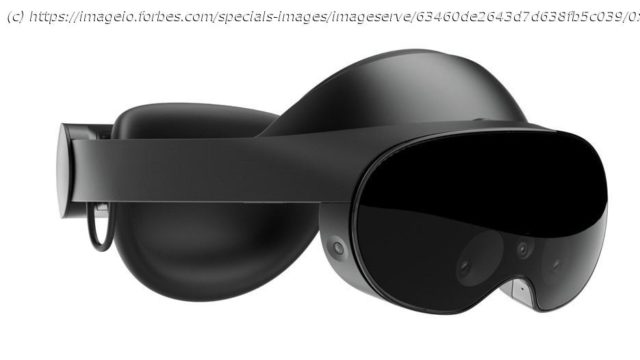Senior Analyst, Mobility & VR, Anshel Sag, gives his analysis of the Meta Quest Pro premium headset.
Meta has a problem. Well, let’s be realistic, Meta has many problems. This problem is that Apple is coming to market with a mixed reality headset early next year. That means the company needs to have a headset in the market around the time that product launches.
Launching before Apple is the best way of countering whatever Apple comes to market with, and that product needs to be premium in appearance, specs, and capabilities to compete with Apple’s anticipated premium product. So, Meta has been looking for a way to position this premium product in a way that allows it to come to market early with a premium product even though the actual market size is still small. It would be criticized heavily for releasing a premium product already seen as a niche within a market that many already see as a niche.
Enter Meta’s enterprise story, which I believe before today was weak and didn’t have much credibility considering that Meta Quest for Business is still a beta program since the company shuttered Oculus for Business last year. All of this is to say that I don’t think very many people fully buy into Meta’s productivity story and that it is how the company is looking to justify the more-than-5x price increase over the Oculus Quest 2. So, let’s dig deeper into the headset, the platform, and the vision behind the Meta Quest Pro.
The headset
The Meta Quest Pro is undoubtedly a premium headset, whether you call it a VR headset, MR headset, or an XR headset to cover all your bases. The Quest Pro, according to Meta’s website, features the latest Qualcomm Snapdragon XR2+ Gen1 which delivers 50% more performance along with a standard 256GB of storage and 12GB of RAM as well as 10 ‘advanced VR/MR’ sensors for tracking a user’s environment, face, hands and eyes. The headset also features a new optics stack, including pancake optics, which reduce the optical volume by 40% compared to the Quest 2. The display attached to this optical stack also features a 37% greater pixel density, a 30% improved color gamut, and 75% more contrast, which is crucial for easily reading text in a virtual environment. It also features two new controllers with independent tracking using three cameras per controller and a Snapdragon 662 mobile chip inside each controller. The new headset also features improved mixed reality capabilities with a 4x higher resolution pass-thru camera pipeline for more lifelike mixed reality experiences compared to the Quest 2. Meta also integrated a curved battery cell in the back of the headset to counterweight the components in the front for less next strain for prolonged use. This headset packs the latest in nearly every possible innovation available today to make for a premium headset experience and does it for $1,499, which I believe is around or below where many expect Apple’s headset will also land.
The software and ecosystem
Meta talked a lot about productivity in VR leading up to this announcement and showed some of the applications already being used today in some enterprises. These applications included ShapesXR for Logitech, Gravity Sketch for Puma and New Balance, Novartis using Nanome, and the ITC using Arthur for training and workshops. Many of these applications pre-date the Oculus Quest platform and have been popular VR apps on other platforms and ported to the Quest. The Quest Pro will mostly rely on Quest 2 applications for the foreseeable future, with the Quest Pro becoming the de facto mixed reality platform for Meta and its developers. Meta’s Presence Platform is at the core of Meta’s mixed reality development efforts. I believe it will be how the company uses mixed reality as an onramp for AR applications once AR headsets improve in capability and performance. The Quest Pro is ultimately a developer device for Meta, much like I expect Apple’s device will be, with both being expensive because of the breadth of capabilities they offer and the bleeding-edge nature of many of the technologies.
Домой
United States
USA — Financial Meta Quest Pro – A High-End Consumer Headset Masquerading As Enterprise?






